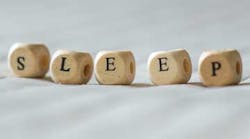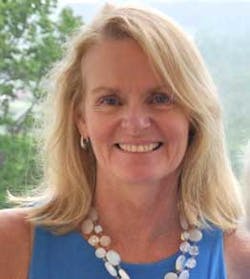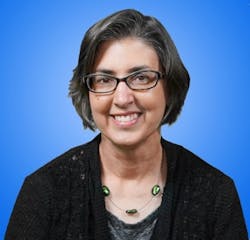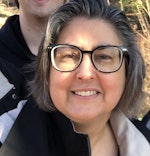Exclusive interview with Dr. Kathleen Bennett: How the new AASM/AADSM guidelines affect the field of dental sleep medicine
This summer the American Academy of Sleep Medicine (AASM) and the American Academy of Dental Sleep Medicine (AADSM) issued a joint guideline for the recommended treatment for adult patients with obstructive sleep apnea (OSA) who are intolerant of continuous positive airway pressure (CPAP) or who prefer an alternative therapy. This new guideline supports teamwork between dentists and physicians to achieve superior treatment of patients with OSA.
ADDITIONAL READING |Obstructive sleep apnea: An opportunity for the dental profession
AASM President Dr. Nathaniel Watson notes, “This evidence-based guideline reinforces the fact that effective treatment options are available for obstructive sleep apnea, a chronic disease that afflicts at least 25 million adults in the United States. Although CPAP therapy is still the first-line option for treating OSA, oral appliance therapy (OAT) is an effective alternative that is preferred by some patients. Sleep medicine physicians and dentists can promote high-quality, patient-centered care by working together to identify the optimal treatment for each patient who has sleep apnea.”
BLOG POSTS FROM THE 2015 AADSM CLINICAL RESEARCH AWARD WINNERS …
Effect of titration on the therapeutic efficacy of mandibular advancement therapy for obstructive sleep apnea treatment
Sleep apnea treatment: Effects of neuromuscular electrical stimulation on the masticatory muscles and physiologic sleep variables in adults with cerebral palsy
Advances in obstructive sleep apnea treatment: Development of an auto-adjusting mandibular repositioning device for in-home use
Prototype device may help predict effectiveness of oral appliance therapy for obstructive sleep apnea treatment
According to the clinical practice guideline, published in the July 2015 issue of the Journal of Clinical Sleep Medicine and then republished in the July 2015 issue of the Journal of Dental Sleep Medicine, treating dentists should work with patients to take their preferences into consideration when prescribing treatment for OSA. All treatment should be done by qualified, board-certified dentists using custom, titratable devices. Oral appliances help maintain an open, unobstructed airway during sleep by protruding and stabilizing the mandible. Studies show that OAT can significantly reduce sleep-disordered breathing and patient compliance may be higher than with CPAP therapy, although CPAP has been shown to be superior in some studies.
AADSM President Kathleen Bennett, DDS, points to the interconnectedness between dentists and physicians as being a critical part of the success of this guideline: “Communication and teamwork between sleep physicians and dentists are imperative to providing exceptional patient care. The new guideline supports this collaborative relationship and highlights the important role that dentists can play in the treatment of obstructive sleep apnea.”
To develop the guideline, the AASM and AADSM commissioned a task force that included three sleep physicians and two dentists with expertise in oral appliance therapy. The task force members performed an extensive review of the scientific literature to draft recommendations and supporting text. A draft of the guideline was made available for public comment, and the board of directors of both the AASM and AADSM approved the revised guideline. Read the full text of “Clinical Practice Guideline for the Treatment of Obstructive Sleep Apnea and Snoring with Oral Appliance Therapy: An Update for 2015” from the Journal of Dental Sleep Medicine website.
The clinical practice guideline is composed of the following six recommendations:
- We recommend that sleep physicians prescribe oral appliances, rather than no therapy, for adult patients who request treatment of primary snoring (without obstructive sleep apnea). (STANDARD)
- When oral appliance therapy is prescribed by a sleep physician for an adult patient with obstructive sleep apnea, we suggest that a qualified dentist use a custom, titratable appliance over noncustom oral devices. (GUIDELINE)
- We recommend that sleep physicians consider prescription of oral appliances, rather than no treatment, for adult patients with obstructive sleep apnea who are intolerant of CPAP therapy or prefer alternate therapy. (STANDARD)
- We suggest that qualified dentists provide oversight—rather than no follow-up—of oral appliance therapy in adult patients with obstructive sleep apnea, to survey for dental-related side effects or occlusal changes and reduce their incidence. (GUIDELINE)
- We suggest that sleep physicians conduct follow-up sleep testing to improve or confirm treatment efficacy, rather than conduct follow-up without sleep testing, for patients fitted with oral appliances. (GUIDELINE)
- We suggest that sleep physicians and qualified dentists instruct adult patients treated with oral appliances for obstructive sleep apnea to return for periodic office visits—as opposed to no follow-up—with a qualified dentist and a sleep physician. (GUIDELINE)
Dr. Kathleen Bennett agreed to answer a few questions from us about this joint guideline in this exclusive interview.
Dr. Kathleen Bennett: The joint clinical guideline from the American Academy of Dental Sleep Medicine (AADSM) and American Academy of Sleep Medicine (AASM) underscores the relevant, vital role that oral appliance therapy plays in treating obstructive sleep apnea and positions dentists as important players on integrated sleep medicine teams. Both the AADSM and AASM anticipate that it will have a positive impact on professional collaborations and patient outcomes in the treatment of obstructive sleep apnea.
Past practice parameters for oral appliance therapy were issued by the AASM alone and based on a small body of oral appliance research. As a testament to the advancement of dental sleep medicine, there now is a growing wealth of research to support oral appliance therapy, and the new guideline is based on these emerging findings.
I also believe the new clinical guideline will drive growth in both the number of practitioners getting involved with dental sleep medicine, as well as the number of patients successfully served by this effective treatment.
DIQ: What do general practitioners need to do to prepare for this change in their practices?
Dr. Bennett: This guideline was not developed to change practices, but to help everyone benefit from the best practices being used in the field today. The guideline is a great resource for both dentists interested in integrating dental sleep medicine into their practice, as well as general dentists and physicians who may encounter questions about snoring, sleep apnea, or oral appliance therapy during routine patient visits.
For the general dental and medical practitioners, the guideline is an educational resource to help them provide patients with a more thorough overview of treatment options for obstructive sleep apnea. With its insights, they can better set the patient’s expectation of what type of treatments may be prescribed and the steps in obtaining optimal care.
For dentists who are just getting into dental sleep medicine, the guideline offers more of a step-by-step plan to aid their patient treatment approach. It instructs that after a physician has diagnosed a patient with sleep apnea and prescribed oral appliance therapy, the dentist should consider a custom, titratable oral appliance, conduct patient followup to survey for and reduce dental-related side effects, and refer patients back to sleep physicians for periodic office visits.
DIQ: Do you see this dentist-physician collaboration in the field of sleep medicine as being a step in the journey toward future collaborations in other areas of oral-systemic health?
Dr. Bennett: Dental sleep medicine could be a model for other oral-systemic health collaborations between dentists and physicians. Because we build long-term relationships with patients and routinely see them twice each year, dentists can play an important role in identifying patients who have a high risk of a chronic disease such as obstructive sleep apnea. The patient care model in dental sleep medicine—screening by dentists, evaluation and diagnosis by physicians, and collaborative treatment—could be replicated in other areas such as oral cancer. In the future, I think more dentists and physicians will collaborate to publish joint research papers.
DIQ: As a result of these changes, how does this affect the patient?
Dr. Bennett: The updated clinical guideline improves the overall treatment experience for patients. It promotes best practices and establishes standards of care that can guide dentists and physicians to provide the most successful therapies and optimal treatment outcomes for those suffering from obstructive sleep apnea.
DIQ: How does the AADSM suggest that dentists educate patients about this new relationship between the dental and medical professions?
Dr. Bennett: The relationship between the dental and medical professions is not new when it comes to oral appliance therapy. Rather, the clinical guideline strengthens the existing relationship and clarifies the individual roles of the dentist and sleep physician to ensure an effective, working relationship that benefits both their practices and their patients. Additionally, the guideline encourages dentists and sleep physicians to collaborate from the start to help ensure patients understand the process for diagnosis, treatment options, and the roles of their care providers.
From a dental perspective, I recommend that dentists who identify an at-risk patient take the opportunity to educate the patient about sleep apnea, diagnosis, and available treatment options—and refer the patient to a sleep physician for a comprehensive evaluation.
DIQ: Does insurance reimbursement become problematic?
Dr. Bennett: Medicare and most medical insurers in the United States cover oral appliance therapy from a dentist as they would a CPAP machine from a physician. Prior to treatment, insurers typically require the patient to have an evaluation by a physician and a sleep study or home sleep apnea test. Then the oral appliance must be ordered by the treating physician following review of the sleep study report.
The AADSM provides dentists with expert resources to assist in the Medicare and medical insurance reimbursement process. The guidelines for medical coverage also are published online by all major medical insurers.
DIQ: Is there anything else about the new guideline that dentists need to be aware of?
Dr. Bennett: Strong relationships with physicians are key to a successful dental sleep medicine practice. Because the new AADSM and AASM guideline provides an outline for how dentists and sleep physicians can best work together, it will help dentists establish and strengthen referral relationships with sleep physicians. Conclusively, the guideline offers support for dentists with a background in dental sleep medicine, helping them to better leverage new research and best practices to benefit their patients, their practice, and the field of dental sleep medicine in their communities.
Sources
American Academy of Sleep Medicine
American Academy of Dental Sleep Medicine








